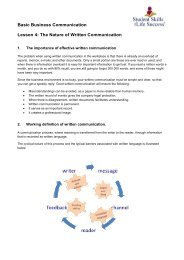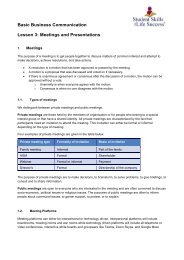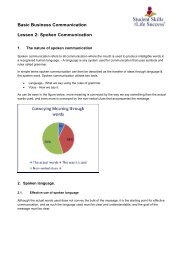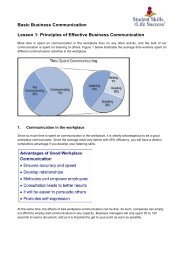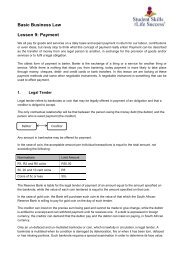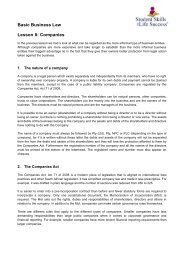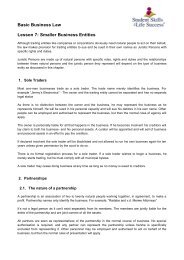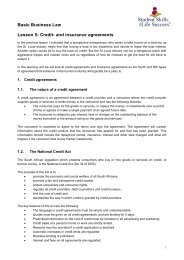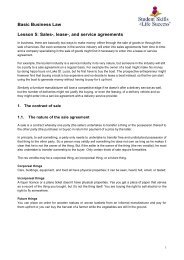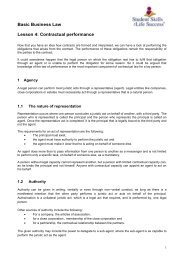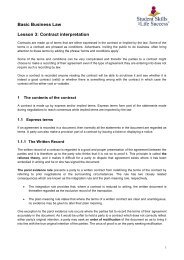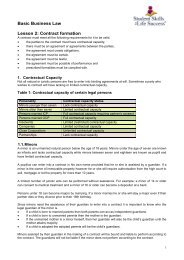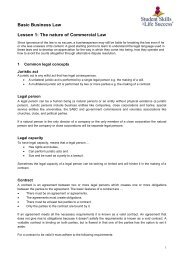Purchasing and Financing 2024
Purchasing- and Financial Management For 2nd year CATS learners. Aligned to the outcomes of the German accredited certification: “Industrie Kaufmann/frau”.
Purchasing- and Financial Management
For 2nd year CATS learners.
Aligned to the outcomes of the German accredited certification: “Industrie Kaufmann/frau”.
You also want an ePaper? Increase the reach of your titles
YUMPU automatically turns print PDFs into web optimized ePapers that Google loves.
1. Average Assets for Period = (Beginning Assets + Ending Assets)/2<br />
2. Asset Turnover Ratio = Total Revenue/Average Assets for Period<br />
The next step, as always when calculating any financial ratio, is to add meaning to this<br />
number by comparing it with the industry averages:<br />
Companies with lower ratios tend to have higher profit margins since more assets<br />
required to generate revenue leads to less competition <strong>and</strong> the ability to raise prices.<br />
Conversely, companies with higher ratios tend to have fewer assets required to generate<br />
revenue, <strong>and</strong> consequently, less barriers to entry. This leads to more competitive pricing<br />
<strong>and</strong> lower profit margins.<br />
c. Inventory Turnover Ratio<br />
The Inventory Turnover Ratio is used to determine whether or not a business is<br />
maintaining adequate levels of inventory <strong>and</strong> is calculated as follows in two steps.<br />
1. Average Inventory = (Beginning Inventory + Ending Inventory)/2<br />
2. Inventory Turnover Ratio = Cost of Goods Sold/Average Inventory<br />
This ratio represents the number of times the inventory is "turned over" during the period<br />
we are measuring. Inventory Turnover is generally higher in the retail industry, with<br />
grocery stores <strong>and</strong> retailers of perishable goods having the highest ratios, where profit<br />
margins are lower, but sales are made in larger volumes. The ratio should be compared<br />
with competitors <strong>and</strong> the industry average.<br />
Another calculation, based on the Inventory Ratio, is to determine how many days it took<br />
to clear the inventory. To calculate the number of days, simply divide 365 by the<br />
Inventory Turnover Ratio.<br />
Evaluating the Profitability of an Organisation<br />
a. Gross Profit<br />
Gross profit is the difference between Sales <strong>and</strong> the Cost of Goods Sold. It is a measure of<br />
a company's core activities <strong>and</strong> is an early measure of business strength.<br />
Profit Margin = (Sales - COGS)/Sales<br />
A strong profit margin is crucial to business success since it represents profit before<br />
operating expenses <strong>and</strong> taxes enter the picture.<br />
b. Net Operating Income<br />
The next key income statement item is operating income. This is the income after<br />
deducting expenses that are necessary for operating the business, such as advertising,<br />
47




